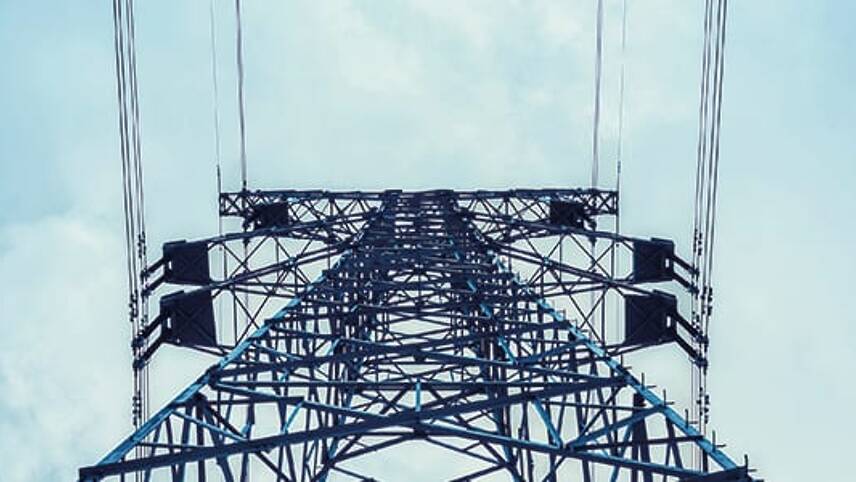This is the Sponsored paywall logged out

As energy networks grapple with the challenges of climate change and a clamour for distributed energy connections, reliability and resilience are under pressure. Utility Week’s recent webinar explored how investment in spur protection could help the industry respond effectively.
Networks are under pressure to improve resilience as climate change makes itself felt and new reliability standards from the regulator bed-in. In a recent webinar, Utility Week teamed up with experts from S&C Electric company to take a look at possible response strategies for UK energy networks – including a fresh focus on network spurs as a source of new reliability and resilience gains. Former Florida Power and Light executive Michael Spoor also joined the session to share how he led a technology deployment programme across the pond which successfully hardened the network against hurricane threats.
The webinar is available on demand here.
But if you’re pushed for time we’ve collected some of the key points below.
What’s in a (storm) name?
The winter of 2021-2022 saw Storms Dudley, Eustice, Franklin and Arwen sweep into the UK, destroying buildings, causing fatalities and leaving millions of households without power.
February 2022 – when Dudley, Eunice and Franklin battered the country over a period of just a few days – marked the first occasion three named storms had arrived in such quick succession since the practice of giving major storms names was introduced by the Met Office in 2015. Storm Arwen, one of the “most powerful and damaging storms of the last decade”, according to the Met Office, brought severe winds across the UK during the night of 26 to 27 November 2021, with gusts of 98 mph recorded in Northumberland. (For a storm to be named, it must have the potential to carry an amber or red weather warning.)
Extreme weather tests the resilience of power networks like nothing else. National Grid Electricity Distribution, formerly Western Power Distribution, reported a record number of outages in the wake of Storm Eunice, with more than 500,000 customers affected. Other networks were similarly impacted. As the UK grapples with rising temperatures and an increase in heatwaves and other extreme weather events, not to mention the impetus from the regulator to improve network reliability, making the electricity grid more resilient has become a key area of concern.
Multiple threats, distributed energy
Grant McEachran, regulatory affairs director at S&C Electric and a former senior economist at Ofgem, says resilience is about handling major threats, whether it’s extreme weather, cyber or even physical attacks. But climate change is number one among the risks, he says.
With these factors in mind, distributed energy resources have the potential to make the grid more resilient, but there’s a need to invest to support them and the increasing electrification of transport and heat as part of decarbonisation. McEachran says: “It’s important to remember that the grid was not designed for this – over the last century, it has essentially operated as a one-way power system.”
Regulation will continue to evolve to support the drive for net zero. RIIO-2’s combination of reliability incentives and the promise of guaranteed performance standards for customers means resilience – to climate and cyber threats as well as workforce resilience – is top of the agenda. A key to factor for success in resilience, McEachran continues, is to create a smart grid that is reconfigurable in real time so that it can respond events and isolate problems rapidly. Enter spur protection as a critical step.
Low hanging fruit is gone – where next for reliability?
The DNOs have done well in terms of building reliability in the most recent regulatory period, acknowledges Chris Watts, director, regulatory affairs at S&C Electric. They’ve beaten Ofgem’s average reliability targets: customer minutes lost have improved by around 48 percent, Watts says. But these targets will tighten again. Should the industry maintain the status quo through to the end of RIOO-ED2, it will end up being penalised financially to the tune of £10 million, he believes.
“Reliability has tended to focus on major feeders but spurs on the network are more likely to be adversely affected by major storms,” adds Watts. Large numbers of upstream energy customers are likely to experience short outages due to extreme weather. “A strategy for improved spur protection will therefore be an important part of improving reliability.”
In Britain, thanks to incentives in the regulatory regime, what S&C Electric calls the “resilience gap” in the UK has reduced. The exception to this trend was 2021-2022 – the year of those particularly extreme weather events.
But looking long-term, even greater focus on resilience will be crucial as Britain adapts to the effects of climate change and networks ensure the lights stay on for customers – whatever the weather.
Living the dream – technology deployment which works
Across the pond on the east coast of the USA extreme weather has long posed a threat to the reliability and resilience of the power system. “It’s not so much a case of if you’re going to get a hurricane but when,” comments former Florida Power and Light executive Michael Spool.
Keen to harden his network to this recurring threat and give FPL’s 12 million customers greater confidence in their security of supply through testing times, Spool led a technology deployment programme in partnership with S&C Electric.
The investment spree saw 95,000 trip-savers or reclosers installed on its ‘laterals’, or spurs. The results have been transformational, as he describes during the webinar.
Want to learn more? Watch the webinar now.

Please login or Register to leave a comment.